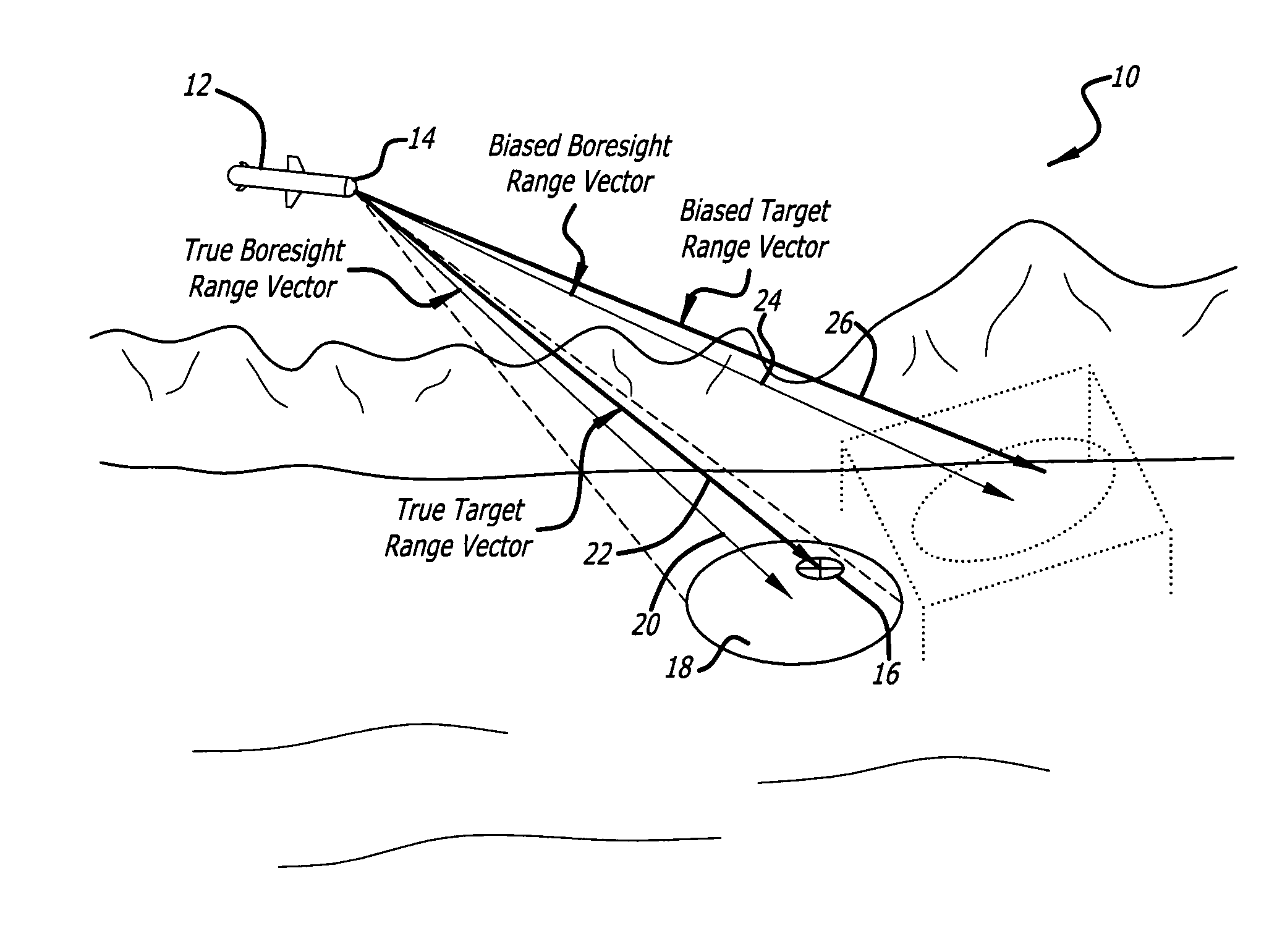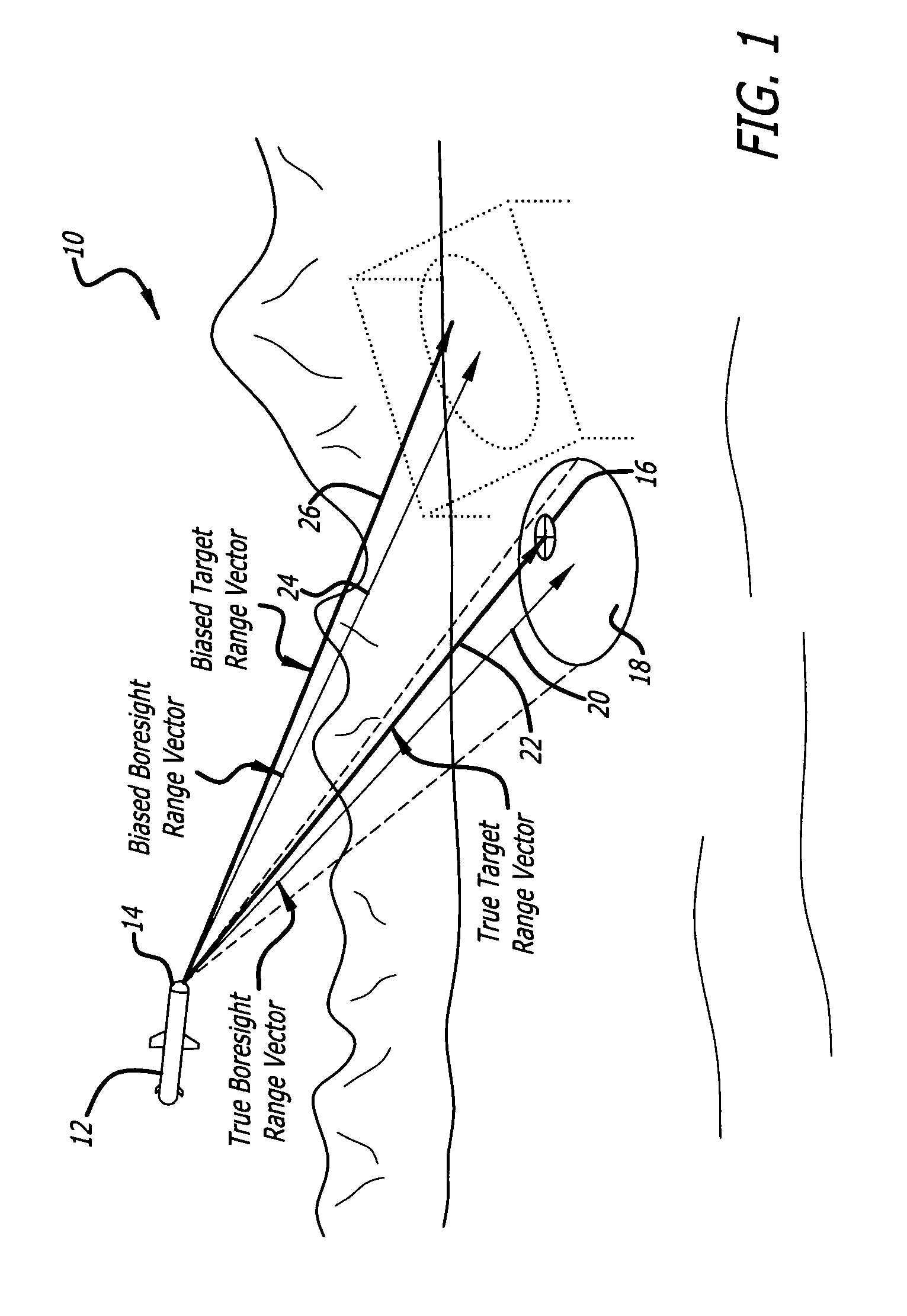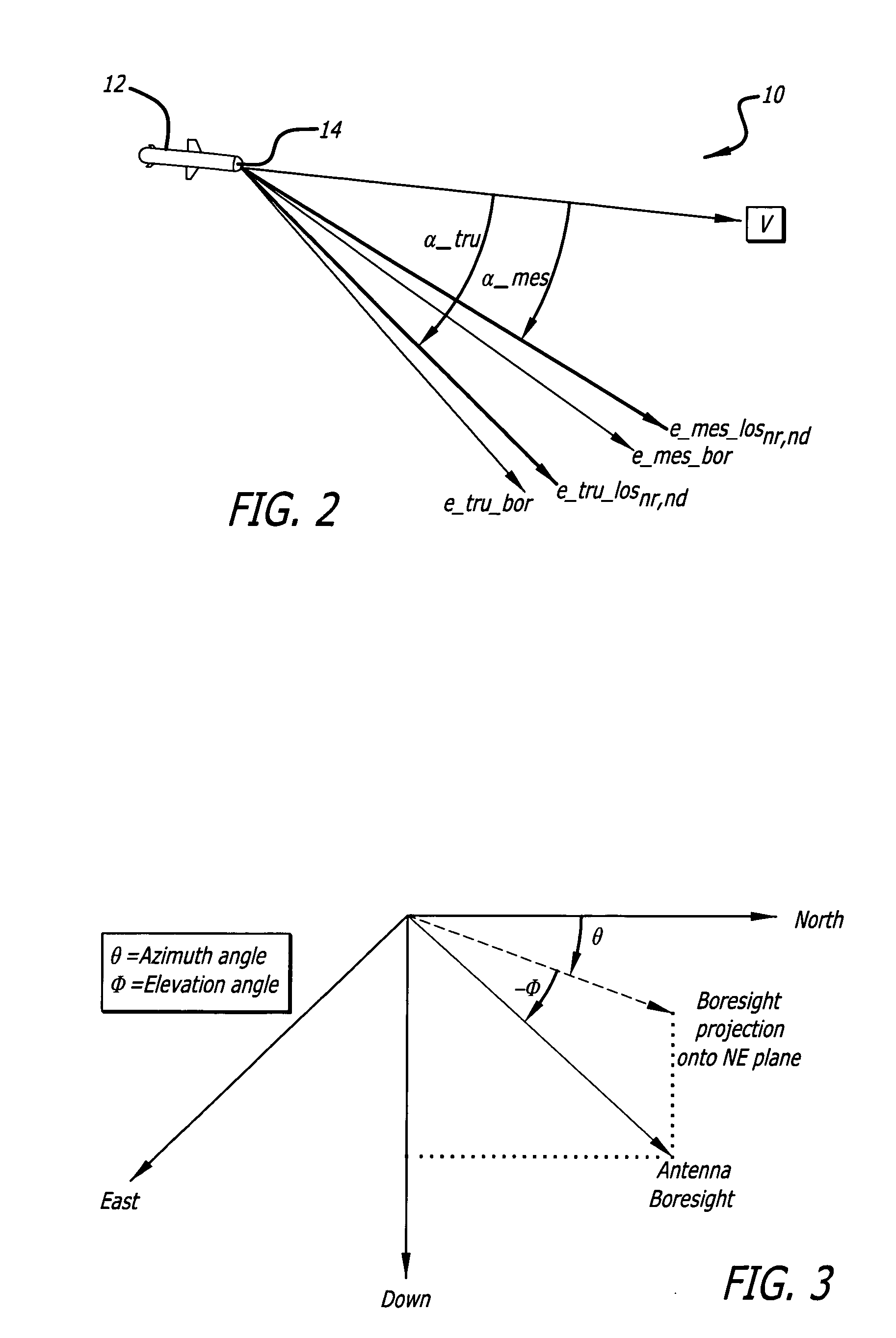Antenna pointing bias estimation using radar imaging
a radar imaging and antenna pointing technology, applied in direction controllers, using reradiation, instruments, etc., can solve the problems of large errors in the apparent direction of the scene being imaged, anechoic chambers that are expensive to build and maintain, and approaches that are typically expensive and/or burdensome, so as to minimize the sum of squares of doppler errors and minimize the effect of doppler errors
- Summary
- Abstract
- Description
- Claims
- Application Information
AI Technical Summary
Benefits of technology
Problems solved by technology
Method used
Image
Examples
Embodiment Construction
[0014]Illustrative embodiments and exemplary applications will now be described with reference to the accompanying drawings to disclose the advantageous teachings of the present invention.
[0015]While the present invention is described herein with reference to illustrative embodiments for particular applications, it should be understood that the invention is not limited thereto. Those having ordinary skill in the art and access to the teachings provided herein will recognize additional modifications, applications, and embodiments within the scope thereof and additional fields in which the present invention would be of significant utility.
[0016]FIG. 1 is a simplified diagram of an illustrative scenario 10 showing the problem addressed by the present invention. A missile 12 is equipped with an imaging radar seeker 14 that uses radar measurements to guide the missile 12 toward a target 16. The imaging radar, which may be, for example, a synthetic aperture radar (SAR) or Doppler beam sha...
PUM
 Login to View More
Login to View More Abstract
Description
Claims
Application Information
 Login to View More
Login to View More - R&D
- Intellectual Property
- Life Sciences
- Materials
- Tech Scout
- Unparalleled Data Quality
- Higher Quality Content
- 60% Fewer Hallucinations
Browse by: Latest US Patents, China's latest patents, Technical Efficacy Thesaurus, Application Domain, Technology Topic, Popular Technical Reports.
© 2025 PatSnap. All rights reserved.Legal|Privacy policy|Modern Slavery Act Transparency Statement|Sitemap|About US| Contact US: help@patsnap.com



